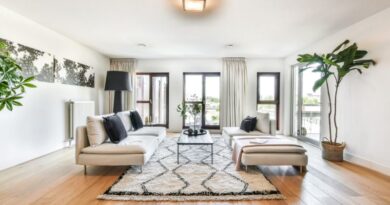Color plays a crucial role in design—it can evoke emotions, convey messages, and set the overall mood of a space or project. Whether you’re designing a website, decorating a room, or creating a logo, selecting the right color palette is essential. However, with countless hues and combinations to choose from, the task can seem daunting. Fear not! Here are ten designer tricks to help you pick the perfect color palette for your next project.
1. Start with Inspiration
Before diving into color swatches, gather inspiration from various sources. Look to nature, art, magazines, or even Pinterest boards to find images that resonate with the mood you want to create. Pay attention to the colors used in these visuals—they can serve as an excellent starting point for your palette.
2. Understand Color Psychology
Colors have psychological effects that can influence how people perceive your design. For instance, blue often conveys calmness and professionalism, while yellow can evoke energy and optimism. Consider the emotions and messages you want to convey, and choose colors that align with your objectives.
3. Use the 60-30-10 Rule
A classic interior design principle, the 60-30-10 rule, can also apply to color palettes. Divide your colors into percentages: 60% for the dominant color, 30% for the secondary color, and 10% for accents. This creates a balanced and visually appealing composition.
4. Embrace the Color Wheel
The color wheel is a designer’s best friend. Familiarize yourself with its basic principles, such as complementary, analogous, and triadic color schemes. These schemes provide harmonious combinations that work well together. Use online tools or physical color wheels to experiment with different combinations.
5. Consider the Mood and Function
The mood of your project should guide your color choices. For a serene bedroom, soothing colors like soft blues and greens might be ideal. In contrast, a vibrant restaurant logo could benefit from bold and energetic hues. Also, consider the function of the space or design—colors can affect usability and user experience.
6. Look at Existing Elements
If your project involves existing elements, such as furniture or branding assets, incorporate their colors into your palette. This ensures coherence and prevents clashing colors. Pull colors from a dominant piece, like a statement rug or logo, to create a cohesive look.
7. Test with Samples
Before committing to a final palette, test your colors in small samples. Many design software tools allow you to create mock-ups or swatches to visualize how colors interact. Additionally, print out color samples or paint swatches to see how they appear in different lighting conditions.
8. Use Nature as a Guide
Nature provides an endless array of stunning color combinations. Look at landscapes, flowers, or seascapes for inspiration. The hues found in a sunset, a forest canopy, or a blooming garden can translate beautifully into your design project.
9. Start Neutral, Add Pops of Color
If you’re unsure where to begin, start with a neutral base. Whites, grays, and beiges serve as versatile backdrops that complement almost any color. Then, introduce pops of color through accessories, textiles, or accents. This approach allows for flexibility and easy updates in the future.
10. Trust Your Instincts and Experiment
Ultimately, the best color palette is one that resonates with you and your project’s vision. Trust your instincts and don’t be afraid to experiment. Create mood boards, play with color swatches, and seek feedback from peers or clients. The process of selecting a color palette should be enjoyable and reflective of your creativity.
In conclusion, choosing the perfect color palette involves a mix of research, experimentation, and intuition. By following these ten designer tricks, you can create harmonious, visually striking designs that leave a lasting impression. Whether you’re a seasoned designer or a novice, let color be your creative ally in bringing your projects to life.







